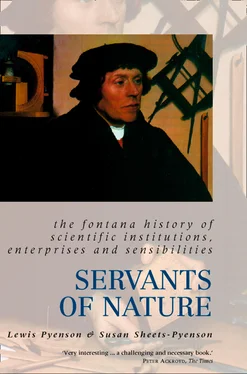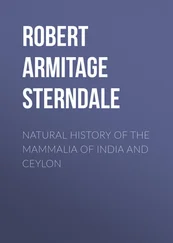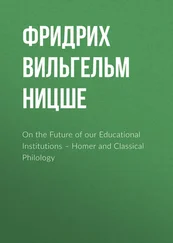The observatory where the Indian astronomers lived and worked was large, even by modern standards. Two grand astrologers supervised the Astronomical Bureau in Thang China, an institution that combined features of observatory and college. They operated one of the largest astronomical schools of any time. In the bureau’s astrological department, 2 professors supervised 5 observers and 150 students; one professor of calendar-making oversaw 2 technicians and 41 students; 6 professors of time-keeping had 37 technicians, 440 clerks to handle various bells and drums that signalled the hours, and 360 students. Separate from the Astronomical Bureau was the Divination Bureau. Divination concerned foreseeing the future on the basis of traditions ranging from the I-Ching (Book of Changes) to geomancy (the favourable attributes and aspects of land that still inspire architectural design in Asia), and it followed the art of Yin and Yang (the qualitative masculine and feminine spirit that resided in all things). The director of divination had 2 vice-directors, 2 professors, 2 assistant professors, 37 technicians, and 45 students. On the twelve-rung scale of the civil service, the astrological directors held posts fifth from the top; experts in calendar-making ranked ninth, and experts in timekeeping apparently had no rating at all.
The apprentice system in Thang astronomy led into middle-management positions. The enterprise departed from a strict technical meritocracy, because directors were parachuted in from outside the bureau. And as foreigners came to carry out many of the calculations, there was little interest at the top or at the bottom in accuracy, fidelity, or innovation. With the exception of the foreign calculators, this institutional structure, modified and diminished in size, also took root in eighth-century Japan, where astronomical knowledge became the domain of a few families and where the dominant Chinese focus on calendar-making ceded to portent astrology.
The structure of astronomy at Chinese observatories separated calendrical mathematics from practical problems of terrestrial mensuration. Chinese maps followed a grid, for example, but unlike Ptolemy’s geography the grid was not keyed to astronomical measurements. There was a small mathematics school founded during the Thang period. Its professors did not rank high in the civil service, and the students were not destined for administrative posts. Sons of minor officials and commoners, the students did not have access to other schools; with their ‘Master of Mathematics’ diploma, they anticipated a career as land surveyor. To an extent even greater than in medieval Europe, Chinese society separated mathematical scholars and mathematical craftsmen.
In both Chinese and Islamic civilizations, the motivation for observing the skies related to legitimizing state authority, which promoted (or at least guaranteed) a faith. Both Chinese and Islamic rulers had heavenly mandates, and it was only natural to read heaven’s signs in the stars. The reign of a Chinese potentate often began with a new, star-informed calendar. The prayers of an Islamic caliph were regulated by the sun and moon, and his life was foretold by the remaining planets. Notwithstanding a divergent interpretation of celestial signs, observatories provided essential information both East and West.
We may identify a progressive evolution of techniques at both Islamic and Chinese observatories. There was in fact persistent interchange of techniques between the two civilizations: al-Khayyami reinterpreted what he thought were Chinese mathematical techniques, and Nasîr al-Tusî received an invitation to Beijing or Qaraqurum. Nevertheless, foreign knowledge (such as the Persian, Manichaean, and Nestorian texts that were translated into Chinese during the eighth century) eventually disappeared. One finds, for example, no trace of Ptolemaïc notions in Chinese texts. Chinese astronomers may have been instrumental in setting up one or another Islamic observatory, but we see nothing of Chinese norms in Central Asian astronomy.
Why? Because astronomy was a state secret and a clan monopoly, foreign astronomers found an ephemeral place in China. The astronomical sciences – astrology, navigation, cartography – could be prosecuted for the most part only under imperial authority; data, methods, and calculations were not available in the public sphere.
In the record of those times when astronomical innovations came to Asia and the Islamic world, however, we see another part of the answer. Innovation in the sciences of observation occurs in the context of aggressive expansion. When a civilization is actively assimilating foreign peoples and exotic cultures, traditional notions of all kinds are subject to modification. The scientific fruit of this expansive vision appears in Hellenistic Alexandria, tenth-century Salerno, thirteenth-century France, Renaissance Italy, Restoration England, eighteenth-century Scotland, and twentieth-century America.
Innovation in instruments
What were the innovations in astronomical instruments between the ancient observers of Stonehenge and the comparably majestic observatory on Hven where Tycho Brahe brought classical, Ptolemaïc astronomy to its apogee? Among the innovations of the Istanbul Observatory was a mechanical clock based on a European design. (Tycho, it may be noted, did not consider mechanical clocks reliable for astronomical work.) Clocks of all kinds flooded the Ottoman world during the sixteenth century, even though they were ill-suited for indicating prayer times, just as they streamed into East Asia as goodwill offerings of European ambassadors and missionaries. Only with Christiaan Huygens’s pendulum clock and the precise chronometers of the eighteenth century did regular, mechanical timepieces enter the observatory.
The astrolabe, perfected in medieval Islam, became a useful navigational device, and its precise scales – stamped and engraved on brass – could be employed for determining planetary positions, as could various wooden cross-staffs of European origin. Brass was also worked into armillary spheres, which allowed for a simultaneous measurement of celestial latitude and longitude. The sphere itself, more cumbersome than useful, could be reduced to a two-dimensional circle or part of a circle. When of large proportions, like the six-foot-radius quarter circle used by Tycho, the instrument could be fixed to a wall and adapted for taking altitude and meridian transits simultaneously. The gradual evolution of instruments, pioneered by professional astronomers, led directly to heliocentric, celestial mechanics: Johannes Kepler (1571–1630) began his reformation of astronomy because he focused on an 8-minute-of-arc discrepancy between Tycho’s observations and traditional calculations.
Observational practice, in particular the use of meridian transit instruments, guaranteed that Tycho’s notion of an observatory would continue to the end of the nineteenth century. The Paris Observatory, for example, took shape in the late seventeenth century as a residential mansion where quadrants, octants, and the new telescopes perambulated to an outdoor terrace. Telescopes went on the roof from the beginning, and wings were added for additional telescopes. In the nineteenth century, advances in metalworking made possible lightweight movable domes, which could enclose permanently mounted telescopic leviathans.
Small instruments evolved slowly and continually at least since the time of Ptolemy, but the large ones changed hardly at all. Innovations derived from star-watchers who needed to determine time and place. The astrolabe, invented in the Mediterranean around the fourth century, responded to the requirements of sailors and astrologers and especially to the men of affluence who underwrote the voyages and horoscopes. With its plates for various latitudes, the astrolabe provided a picture of the fixed stars in stereoscopic projection, and its obverse served to sight the altitude of celestial objects. A serious student of the stars, realizing the limitation by latitude of such a calculating device, would seek to generalize it; the universal astrolabe appeared by the eleventh century in Toledo. It would be obvious to a frequent user, furthermore, that one needed only a quarter-circle for determining time and place; as we have seen, quadrants of this kind enjoyed popularity by the fourteenth century.
Читать дальше












